
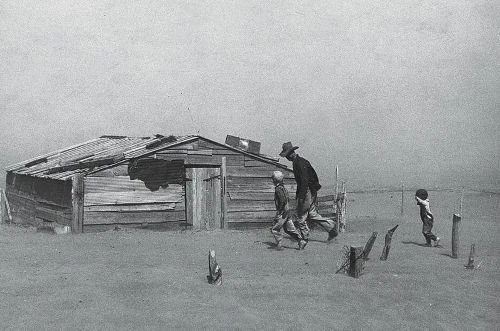
Climate science has provided the tools and knowledge to mitigate and adapt to climate change.

By Matthew A. McIntosh
Public Historian
Brewminate
Introduction
The science of climate change, though rooted in centuries-old inquiries into atmospheric phenomena, came into its own as a rigorous and expansive discipline during the 20th century. As humanity moved through industrialization and into the digital age, the role of fossil fuels in altering Earth’s climate became increasingly clear. Climate change science has since evolved into an interdisciplinary field encompassing meteorology, oceanography, physics, chemistry, biology, and social sciences. The trajectory of this scientific field reveals not only the deepening understanding of Earth’s systems but also the complex interplay between science, politics, economics, and society.
Early Foundations and the Birth of Modern Climate Science (1900–1950)
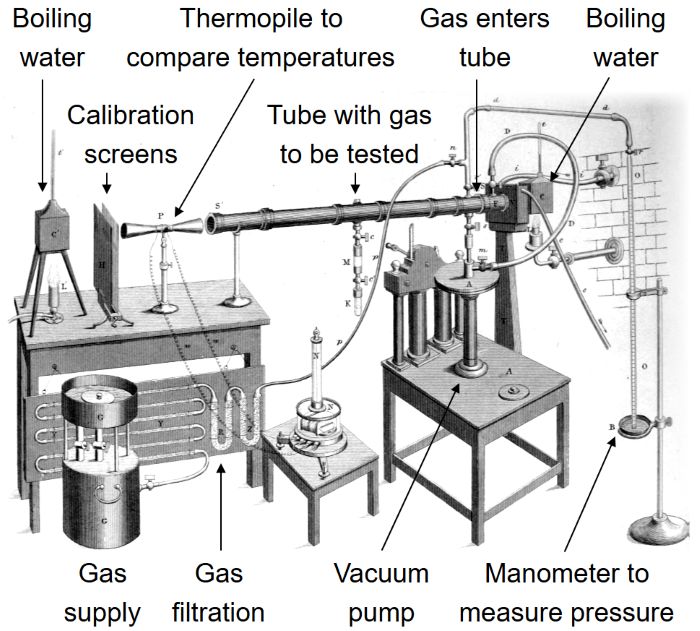
The foundational principles of climate science were laid in the 19th century by scientists like Joseph Fourier, who theorized about the Earth’s heat balance, and John Tyndall, who identified gases such as carbon dioxide (CO₂) and water vapor as significant in trapping heat.1 Svante Arrhenius advanced this further in 1896 by suggesting that CO₂ from fossil fuel combustion could raise global temperatures—a rudimentary anticipation of anthropogenic global warming.2
In the early 20th century, these ideas remained speculative. However, Guy Stewart Callendar revived interest in Arrhenius’ hypothesis in the 1930s and 1940s, compiling temperature records and arguing that observed warming correlated with increased CO₂ emissions.3 While his work was important, the broader scientific community remained skeptical that humans could significantly affect the global climate.
The Postwar Scientific Renaissance and the Dawn of Quantification (1950–1970)
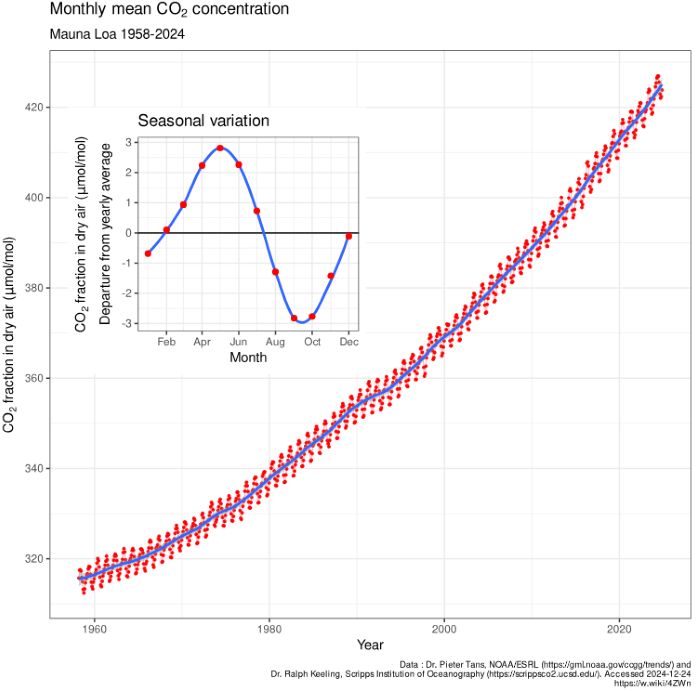
Post-WWII investment in atmospheric research brought advances in instrumentation, computing, and satellite technology. A pivotal moment came in 1958 when Charles David Keeling began recording atmospheric CO₂ at Mauna Loa Observatory, creating the now-famous “Keeling Curve.”4 This dataset provided incontrovertible evidence of increasing atmospheric CO₂.
Roger Revelle and Hans Suess published a paper in 1957 arguing that fossil fuel CO₂ was accumulating in the atmosphere, famously stating that humanity was conducting a large-scale geophysical experiment on the planet.5 During the 1970s, however, a temporary cooling trend in the Northern Hemisphere led to some speculation about a possible new ice age, fueled in part by increased aerosols and volcanic activity.6 Yet by the end of the decade, the dominant scientific narrative pointed toward warming.
From Scientific Consensus to Political Awareness (1970–1990)
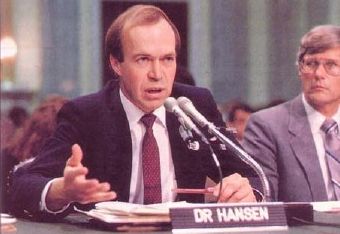
Advances in computing during the 1980s facilitated more complex climate models, allowing researchers to simulate Earth’s climate with increasing precision. The 1979 “Charney Report,” commissioned by the U.S. National Academy of Sciences, estimated a 1.5°C to 4.5°C temperature increase from a doubling of atmospheric CO₂—a foundational finding that remains consistent today.7
In 1988, NASA climatologist James Hansen testified before the U.S. Senate, declaring with high confidence that global warming was underway due to greenhouse gases.8 The same year, the Intergovernmental Panel on Climate Change (IPCC) was established to provide comprehensive assessments of the science, impacts, and policy implications of climate change.9
Climate Science in the Age of Globalization (1990–2010)
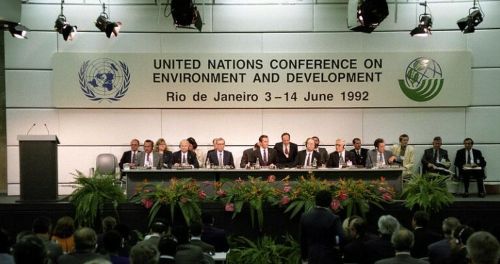
The IPCC’s First Assessment Report in 1990 laid the groundwork for international agreements, including the 1992 United Nations Framework Convention on Climate Change (UNFCCC). The Second Assessment Report in 1995 was the first to state that “the balance of evidence suggests a discernible human influence on global climate.”10 The Kyoto Protocol followed in 1997, mandating emissions reductions for industrialized countries.
Paleoclimatology also made significant strides during this period. Ice core data from Antarctica showed that modern CO₂ concentrations were unprecedented in the last 800,000 years.11 Meanwhile, General Circulation Models (GCMs) matured into tools capable of predicting regional and global climate trends with increasing reliability.
Climate Science in the Era of Consequences (2010–Present)
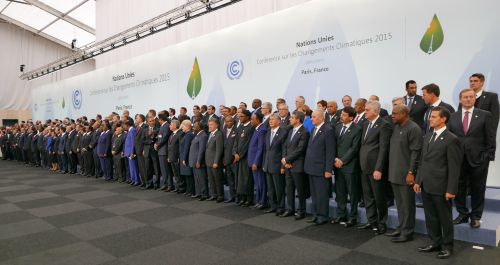
By the 2010s, climate change had moved from a future threat to a current reality. The IPCC’s Fifth Assessment Report (2013–2014) concluded with 95% certainty that human activities were the dominant cause of warming since the mid-20th century.12 This was followed by the 2018 Special Report on Global Warming of 1.5°C, which warned that even half a degree of additional warming would significantly increase the risk of extreme weather, sea-level rise, and biodiversity loss.13
The Paris Agreement of 2015 marked a global commitment to limit warming to “well below 2°C,” aiming for 1.5°C if possible. While progress has been uneven, the role of climate science in shaping global policy has been profound.
Emerging fields such as climate attribution science now allow researchers to quantify the influence of human-induced warming on specific weather events, making climate change more tangible to the public.14 Earth system models now integrate socio-economic pathways and ecological impacts, reflecting the interdisciplinary nature of the field.
Contemporary Challenges and Future Directions
Despite a near-universal consensus among climate scientists, public understanding and political action remain inconsistent. Misinformation campaigns—often backed by fossil fuel interests—have delayed policy action and undermined scientific credibility.15 Nonetheless, the scientific enterprise continues to evolve, incorporating machine learning, high-resolution projections, and systems modeling to forecast the future of the climate.
Looking ahead, the challenge is not only scientific but moral, economic, and political. Climate science has provided the tools and knowledge to mitigate and adapt to climate change. The imperative now is to act.
Conclusion
The history of climate change science in the 20th and 21st centuries reveals a remarkable evolution—from speculative theory to an interdisciplinary, globally coordinated field. From Arrhenius’ early calculations to Keeling’s measurements, Revelle’s warnings, and the IPCC’s consensus reports, the trajectory has been one of growing precision and urgency.
As humanity faces an increasingly unstable climate, the lessons of this history are clear. Science has illuminated the path ahead; it remains to be seen whether society will follow.
Appendix
Endnotes
- Spencer R. Weart, The Discovery of Global Warming (Cambridge: Harvard University Press, 2003), 5–15.
- Svante Arrhenius, “On the Influence of Carbonic Acid in the Air upon the Temperature of the Ground,” Philosophical Magazine, Series 5, Vol. 41 (1896): 237–276.
- Guy S. Callendar, “The Artificial Production of Carbon Dioxide and Its Influence on Temperature,” Quarterly Journal of the Royal Meteorological Society 64, no. 275 (1938): 223–240.
- Charles David Keeling, “The Concentration and Isotopic Abundances of Atmospheric Carbon Dioxide in the Mauna Loa Observatory Record,” Advances in Geophysics 18 (1975): 1–27.
- Roger Revelle and Hans E. Suess, “Carbon Dioxide Exchange Between Atmosphere and Ocean and the Question of an Increase of Atmospheric CO₂ During the Past Decades,” Tellus 9, no. 1 (1957): 18–27.
- Weart, The Discovery of Global Warming, 56–61.
- National Research Council, Carbon Dioxide and Climate: A Scientific Assessment (Washington, D.C.: National Academy of Sciences, 1979).
- James Hansen, “The Greenhouse Effect and Global Climate Change,” Testimony before the U.S. Senate Committee on Energy and Natural Resources, June 23, 1988.
- Intergovernmental Panel on Climate Change (IPCC), Climate Change: The IPCC Scientific Assessment (Cambridge: Cambridge University Press, 1990).
- IPCC, Climate Change 1995: The Science of Climate Change (Cambridge: Cambridge University Press, 1996).
- Weart, The Discovery of Global Warming, 101–109.
- IPCC, Climate Change 2013: The Physical Science Basis (Cambridge: Cambridge University Press, 2013).
- IPCC, Global Warming of 1.5°C (Geneva: IPCC, 2018).
- Friederike Otto et al., “Attribution of Extreme Weather Events in the Context of Climate Change,” Nature Climate Change 6 (2016): 106–113.
- Naomi Oreskes and Erik M. Conway, Merchants of Doubt (New York: Bloomsbury Press, 2010).
Bibliography
- Arrhenius, Svante. On the Influence of Carbonic Acid in the Air upon the Temperature of the Ground. Philosophical Magazine, Series 5, Vol. 41 (April 1896): 237–276.
- Callendar, Guy S. “The Artificial Production of Carbon Dioxide and Its Influence on Temperature.” Quarterly Journal of the Royal Meteorological Society 64, no. 275 (1938): 223–240.
- Hansen, James. “The Greenhouse Effect and Global Climate Change.” Testimony before the U.S. Senate Committee on Energy and Natural Resources, June 23, 1988.
- Intergovernmental Panel on Climate Change (IPCC). Climate Change 1995: The Science of Climate Change. Cambridge: Cambridge University Press, 1996.
- Intergovernmental Panel on Climate Change (IPCC). Climate Change 2013: The Physical Science Basis. Cambridge: Cambridge University Press, 2013.
- Intergovernmental Panel on Climate Change (IPCC). Global Warming of 1.5°C. Geneva: IPCC, 2018.
- Keeling, Charles David. “The Concentration and Isotopic Abundances of Atmospheric Carbon Dioxide in the Mauna Loa Observatory Record.” Advances in Geophysics 18 (1975): 1–27.
- National Research Council. Carbon Dioxide and Climate: A Scientific Assessment. Washington, D.C.: National Academy of Sciences, 1979.
- Oreskes, Naomi, and Erik M. Conway. Merchants of Doubt: How a Handful of Scientists Obscured the Truth on Issues from Tobacco Smoke to Global Warming. New York: Bloomsbury Press, 2010.
- Otto, Friederike, et al. “Attribution of Extreme Weather Events in the Context of Climate Change.” Nature Climate Change 6 (2016): 106–113.
- Revelle, Roger, and Hans E. Suess. “Carbon Dioxide Exchange Between Atmosphere and Ocean and the Question of an Increase of Atmospheric CO₂ During the Past Decades.” Tellus 9, no. 1 (1957): 18–27.
- Weart, Spencer R. The Discovery of Global Warming. Cambridge: Harvard University Press, 2003.
Originally published by Brewminate, 05.29.2025, under the terms of a Creative Commons Attribution-NonCommercial-NoDerivatives 4.0 International license.


